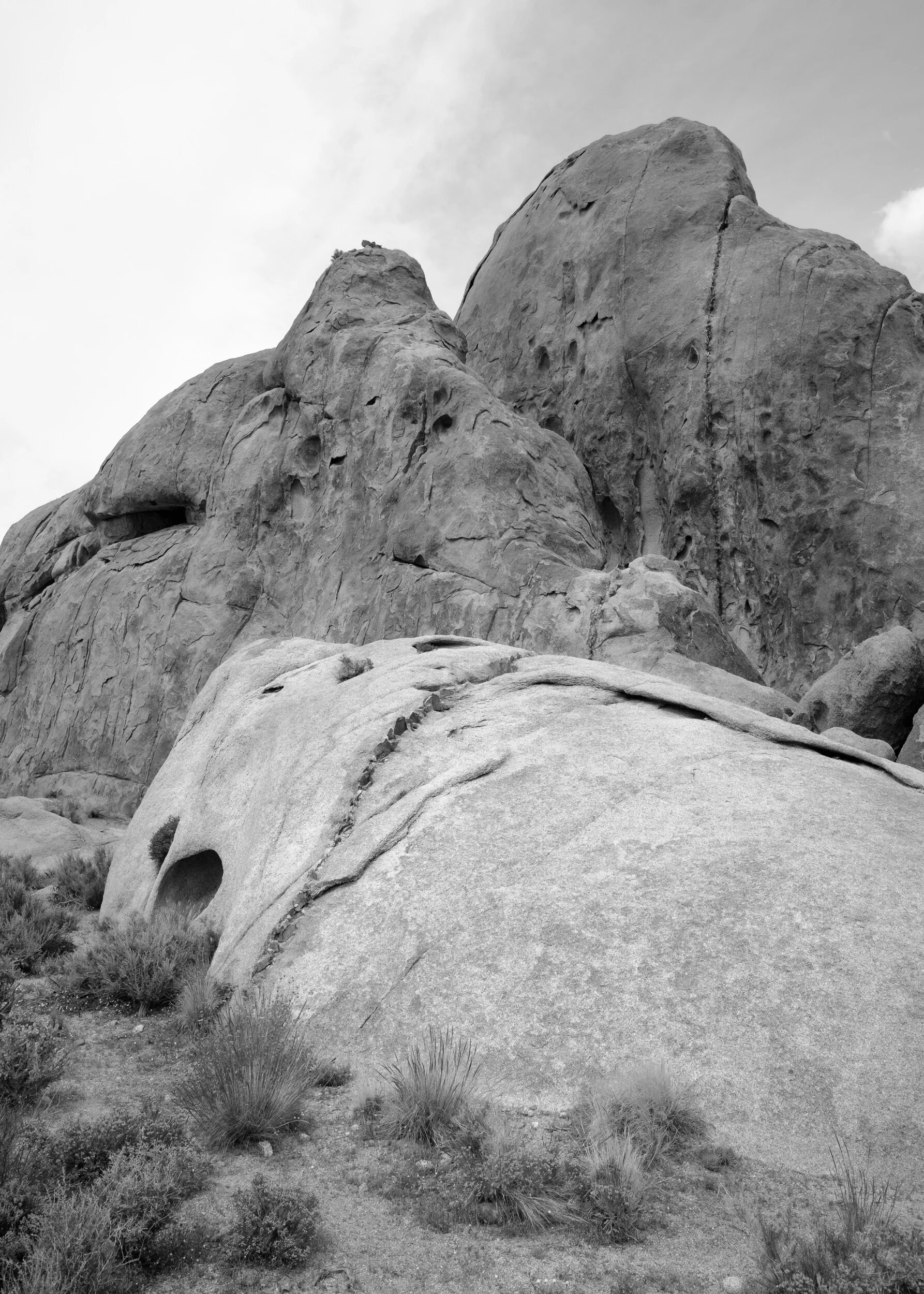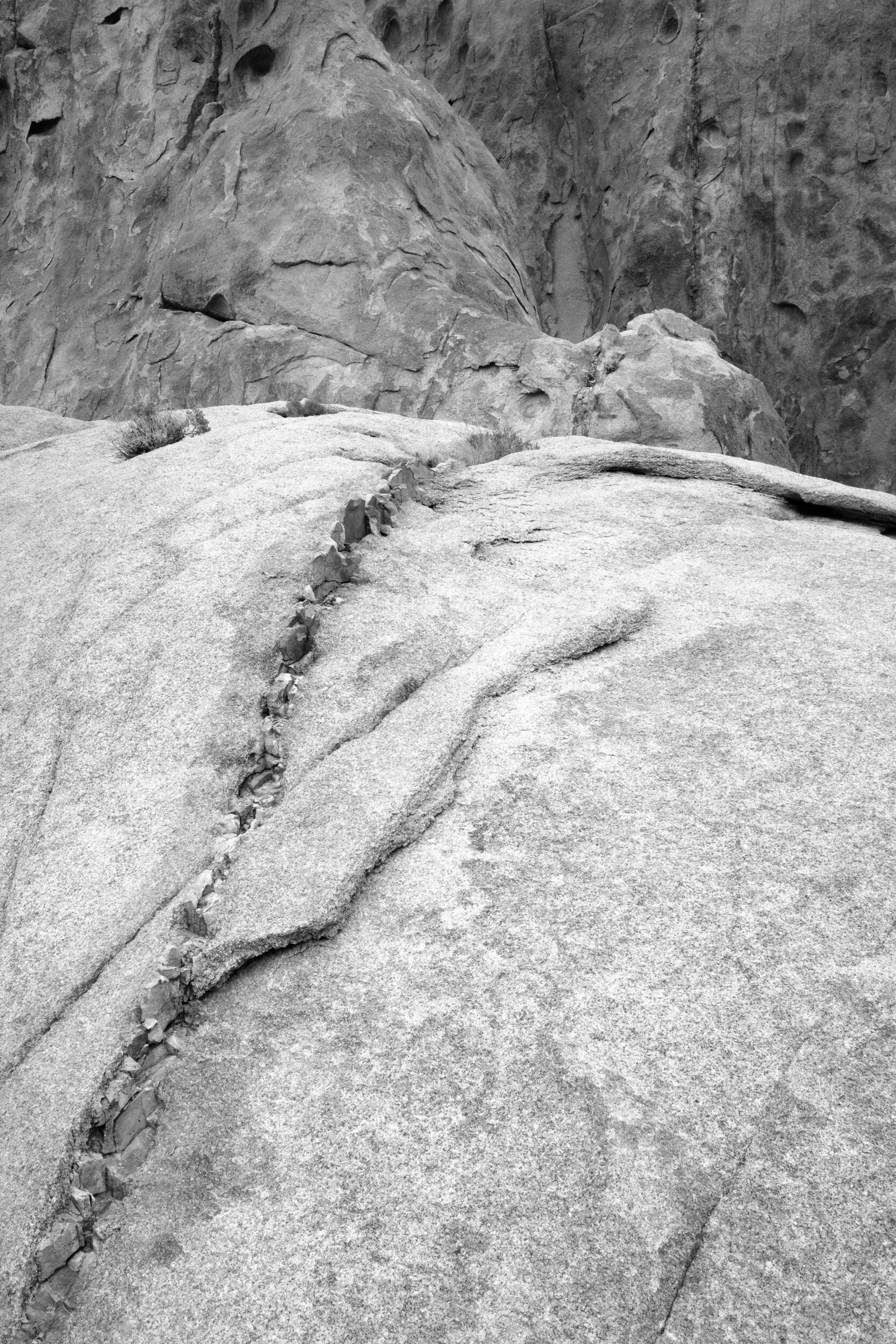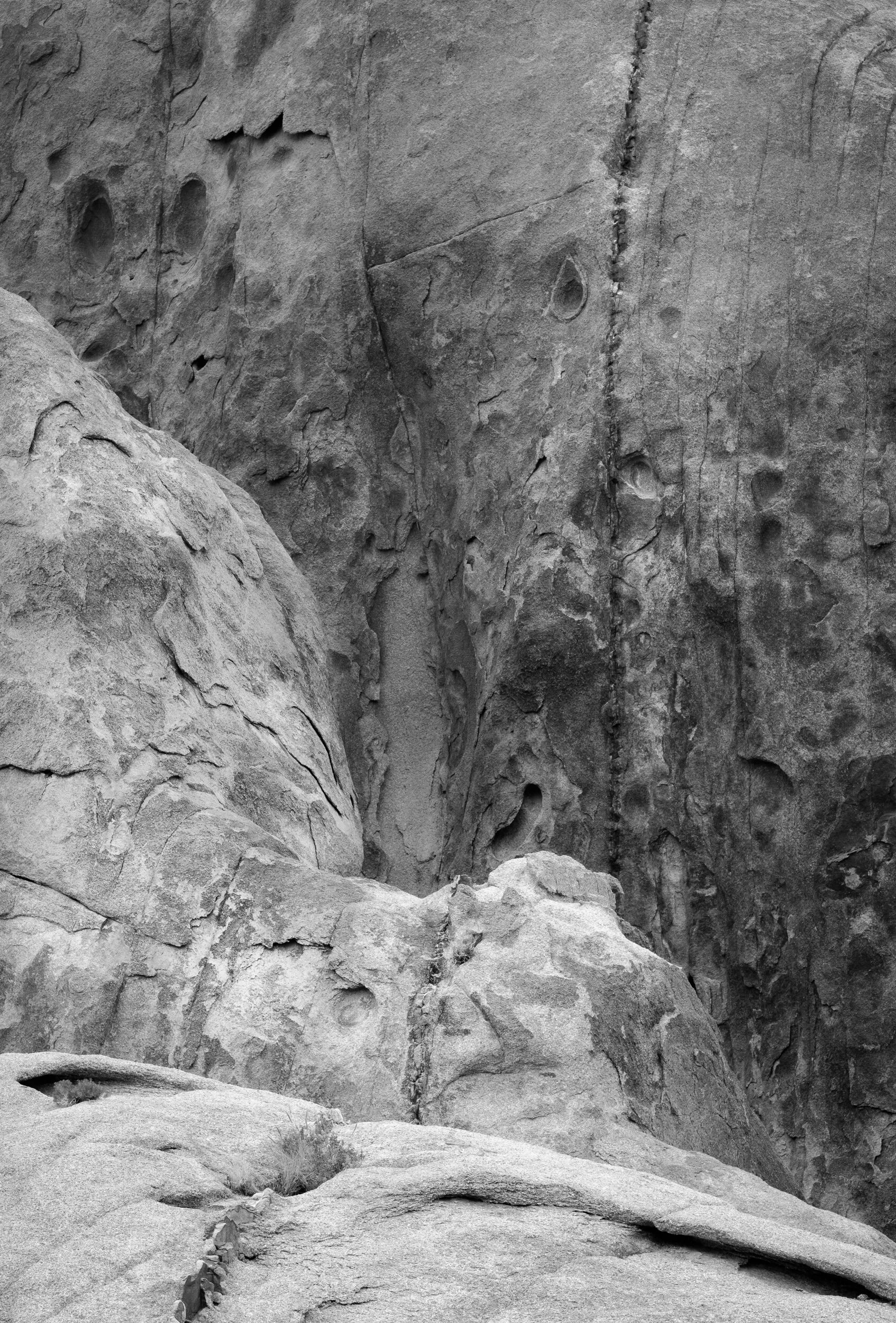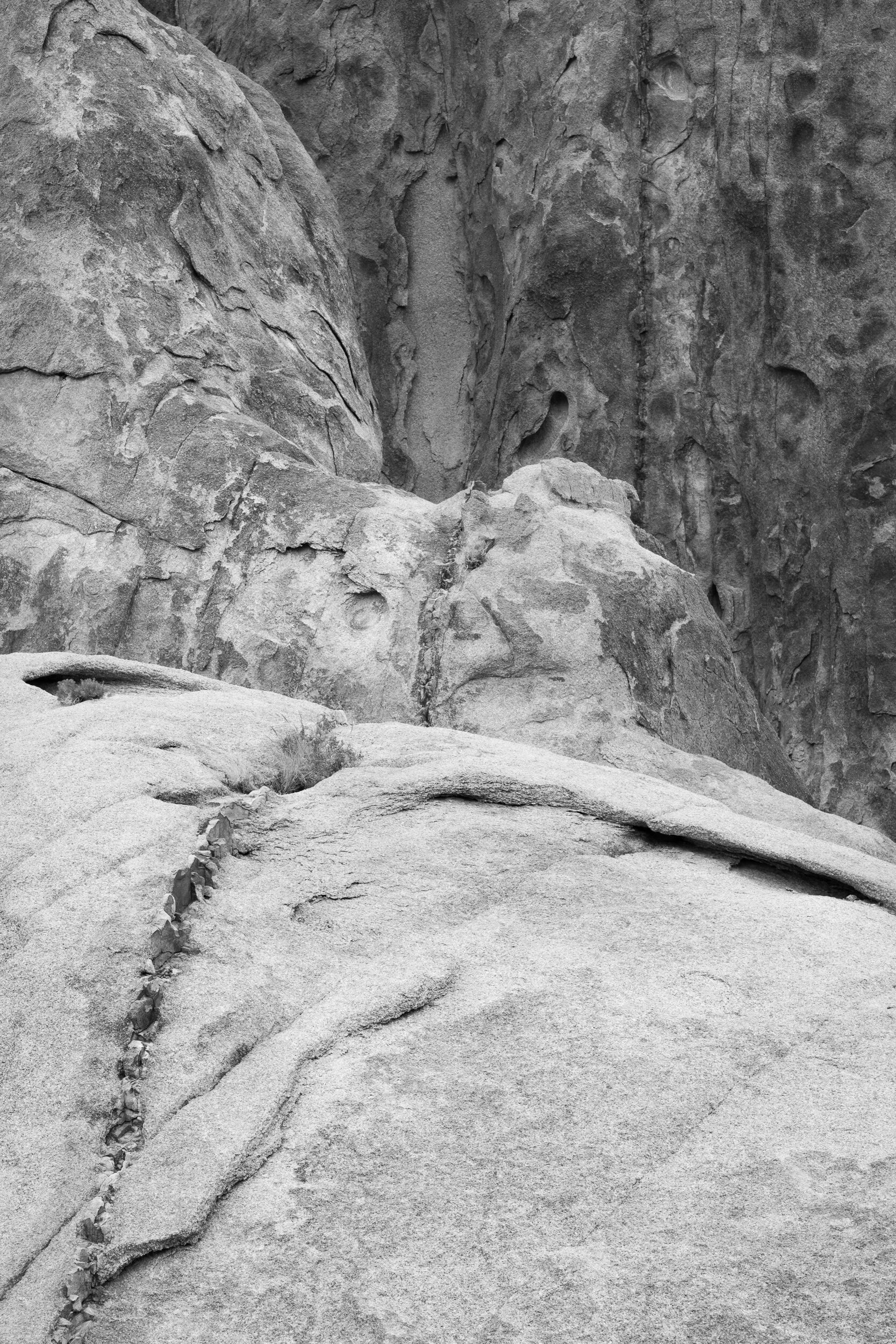Fissure
Lately I’ve been reading a lot of Charlie Waite, a landscape photographer from Great Britain, studying his images and thinking through what he has to say about them. Regarding one image, of a stark white tree and an old barn in front of a forest backdrop, he says:
“I was drawn by the peeling paint, the windows, and the milky roof. The red paint contains a whiteness that echoes the silvery silhouette of the tree. Remember what it was that first drew you to an image, and retain a sense of that in the final photograph.”
That last sentence captures what I often need to do when I let images sit for a while and then return to them. At first I may wonder, “What was I thinking?” (all too often not in a good way). But once I remember what it was, I suddenly see the image for what I intended and am able to make a judgment on whether it deserves more work and, more importantly, what to do to ensure that intent is evident in the photograph. Other times I look at an image and immediately know what it was that drew me to the image. It doesn’t necessarily mean that the latter type of image will be more successful than one that leaves me scratching my head for a few minutes, but knowing why I pressed the shutter in the first place (or why I framed it the way I did, or used the lens I did, etc.) is the starting point to realizing the image that I originally saw. Which is, in part, the point of making a photograph.
I’ve been going through my images from the trips we’ve taken since we picked up Beast, doing the mundane task of tagging, culling and identifying images I want to develop further. I came across a set of images from our visit to the Alabama Hills that immediately triggered in my mind why I pulled Beast over and started photographing. And since one can only do so much mundane work in Lightroom before an interesting image calls you and says, “Wouldn’t you rather be doing something a bit more creative?”, I stopped the culling and did just that. Not just with one image, but with four. They happened to be the first four images of the trip.
We hadn’t really done a lot of photography for awhile and I was anxious to just get out and photograph. I always have this feeling of, “what if I don’t see anything,” that lurks in the back of my mind, especially at the start of a big trip. We’d been driving for a while at the Alabama Hills not seeing anything that immediately grabbed us and that voice was speaking to me for a few minutes when I looked over and immediately knew I had to stop. Off to our right was a rock outcropping with a series of ascending formations that looked like someone had taken a knife and sliced through the rocks. You could see this thin fissure as it undulated along the rock surface stepping higher and higher. Only in the whole did you realize it was not an undulating line, but a slice right through the rock. Multiple rocks, at exactly the same location. What caused it? How? When? A flood of questions passed through my mind before the correct response landed, “Who cares, but I’ve got to photograph that!” So I hit the brakes and pulled over.
The first image really was simply to get a feel for what was drawing me to the subject and to get that first photograph under my belt. Sometimes you just have to do that, start photographing so that you can start seeing. So I made the obvious photograph, documenting what it was that first captured my interest.
That image down, I started walking around it, looking at the fissure from different angles, climbing up on the rocks, and deciding that I really needed to try and find an image that screams “fissure” and the oddity of what I was looking at. These images are a pretty good example of what it means to work a subject, to make multiple images of something, to explore the possibilities in an effort to really capture what you’re seeing and feeling.
So I went at it.
After making this image, I realized that what it has in directly explaining the fissure, it loses from missing the impact one gets when you see it climb the wall of the third rock. In this photograph it doesn't climb the wall because it's cut off.
So I recomposed for another image, this time giving more emphasis on the back wall.
Still not sure whether I got the balance right, I made yet another image.
Perhaps in trying to balance the front rock and back wall I wound up splitting the baby and lessening the impact of the fissure altogether.
I still haven’t decided whether any of the above images are successful, or even whether black and white is the way to go with these images. But I doubt this is the last time I’ll be working on them.
The one thing I do know, is that it doesn’t take me much effort to remember what attracted me to these rocks in the first place and what the image is about.



